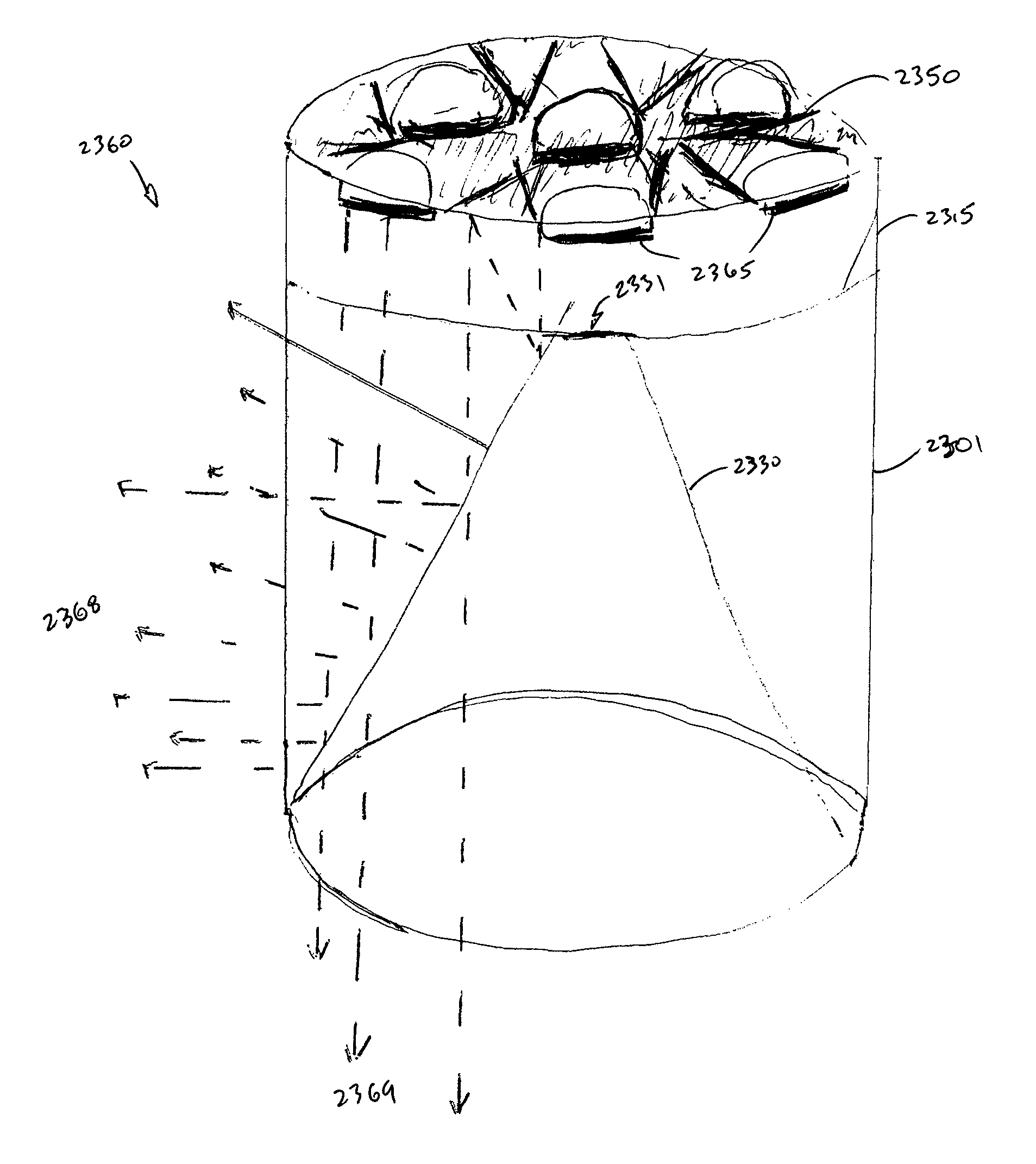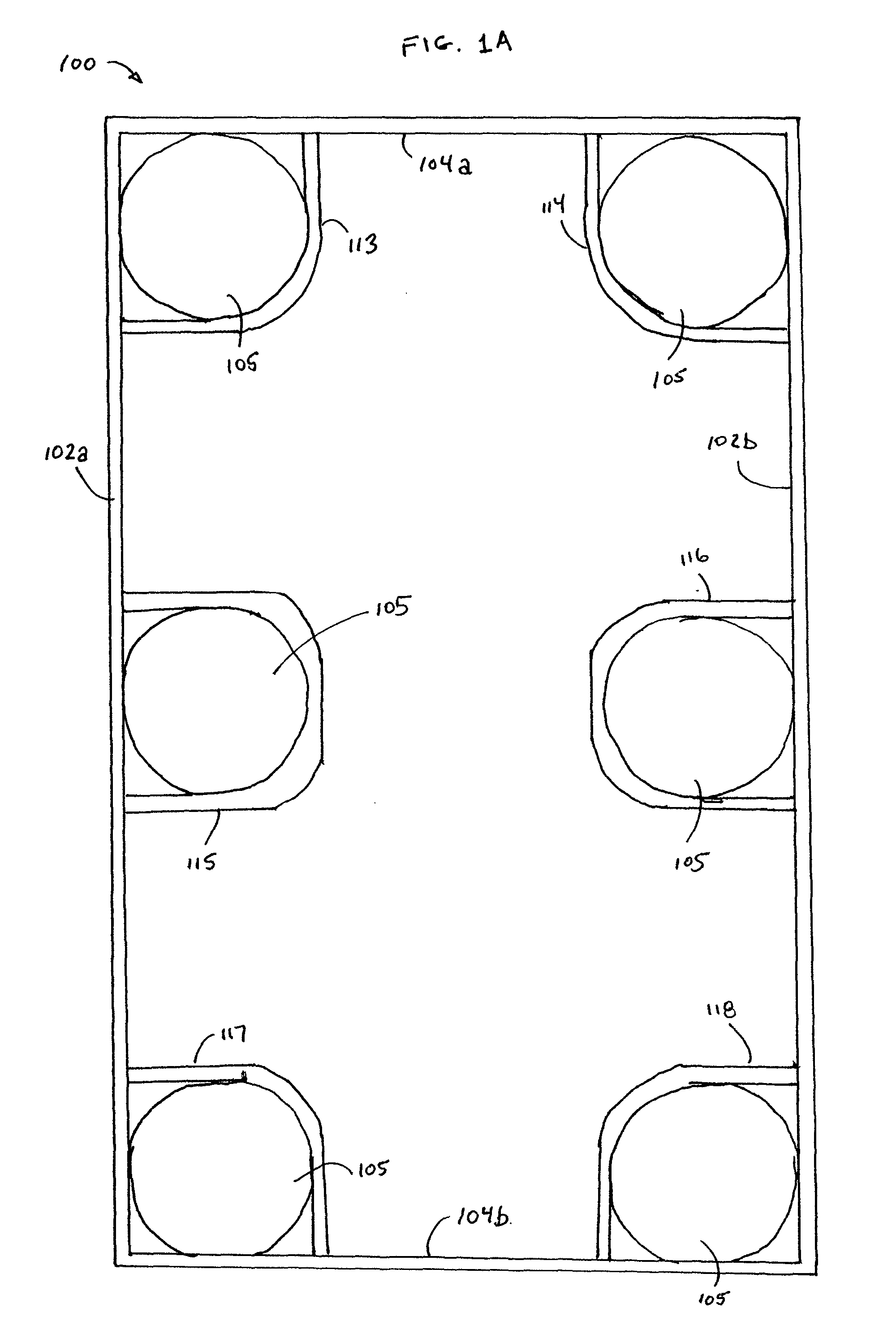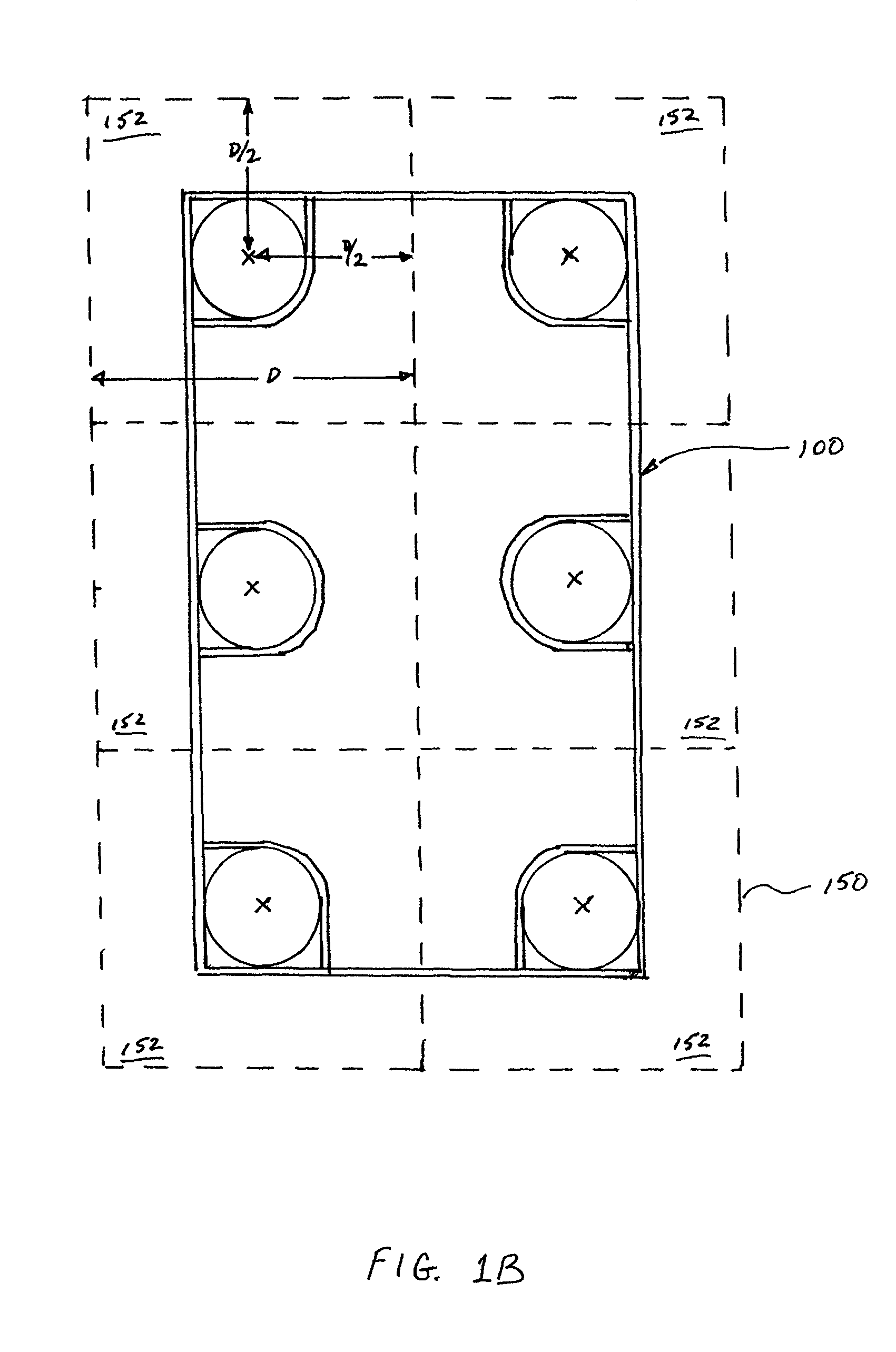One drawback of conventional par lamps is that they can use a great deal of power, especially when combined in an array of many lamps.
However, they are generally quite expensive, heavy, and bulky in nature.
These larger units tend to be heavy and rather expensive.
The advertised weight of Source Four par lamps is approximately eight pounds, and thus combining many lamps into large units would result if rather heavy lighting appliances.
This can be problematic for use in the entertainment field, where portability and maneuverability are significant concerns.
These retrofitted multi-par fixtures have similar size and, to some extent, weight issues as conventional 8″ (Par 64 style) multi-lamp par fixtures.
Although use of a lighter weight aluminum reflector and replacement of some steel parts with aluminum does help to reduce the overall weight somewhat, these lights have other drawbacks.
For example, they do not have optimal light output because the HPL components do not match up with the non-HPL components, such as the reflector and lens which are 8″ (Par 64) in
diameter, while the HPL
bulb is optimized for a 7″
diameter (Par 56) size.
Also, these units do not allow convenient replacement of globes.
A
technician must remove a hot lens (if the lamp has been operating) and attempt to replace the globe from the front, which may require that the
technician wait for the lamp to cool down or else
expose the
technician to some risk of injury, for example.
While back cross key lighting is used, for example, in almost all sitcoms, there are some inherent drawbacks to the approach.
One problem is that the “key” or strongest, and often hardest, light comes from the top / back (upstage) portion of the set, so there are invariably shadows thrown from the people and objects on the set onto each other.
The strong (“hard”) light coming from the back also creates hot rims around people and is especially objectionable on bald or light-haired individuals.
This hard light, which has been traditionally used, can also create unwanted
microphone boom shadows.
Because of the inherent inefficiency in the design of the reflector and
Fresnel lens, the output of these instruments if softened substantially with one or more moderate or heavy
diffusion filters placed in front of the light results in very poor output versus amperage drawn.
As there are numerous lights on a set, and as providing a diffusion screen on each light is cumbersome, and as it is further cumbersome to change such screens and to align such lights to properly cooperate, the use of individually mounted diffusion devices is not practical or economical for some set lighting especially sitcoms.
The device itself which provides light diffusion must be entirely changed to change the light
diffusion effect, and it has limited ability to control and direct light.
It is therefore impractical to use for set lighting.
Moreover, it requires a pump to maintain the
inflatable device, which can be noisy and thus could interfere with shooting television or motion pictures.
Even when diffusion is used, often expensive Fresnel lights are used with it.
Fresnel lights also have other drawbacks; for example, they are generally expensive, inefficient, heavy and cumbersome.
However, many such fixtures generally do not provide an efficient soft projected and consistent light.
These contraptions were originally designed with silver tip bulbs which are opaque on half the round portion of the globe, so that when illuminated in a downwards position the
light energy would be directed at the interior roof of the “coop” thus creating a bounced light that is quite inefficient versus amperage drawn.
When used with more standard globes (such as 1000
Watt mogul base bulbs without the “silver tip”), the light is unevenly pushed through the lamps themselves and bounced off the light shell, resulting in a very mixed source with limited projection.
The
color temperature of the bulbs is not ideal for motion picture and other photographic purposes; thus, the interior of the
chicken coop unit which acts as the reflector is commonly painted a light blue to “cool off” the warm bulbs.
This not only reduces reflection efficiency, but it also causes a different
color temperature light to be emitted from the unit, since the reflected light is colder than the direct light when using non silvertip globes.
Even if a diffusion screen is used, the light is inconsistent and the bulbs cannot be individually controlled in a traditional
chicken coop configuration.
Also, sound can be an issue, as dimming of these lamps often results in creation of a
hum or
noise which is unsuitable for filming with synchronized (live capture) sound.
One problem with the space light as an overhead
light source is that it uses quite a bit of energy for relatively little output.
Even when used without the black sheaths, the light output and range of projection is still unimpressive in view of the amount of amperage drawn.
The quality of the space light (in terms of softness / color) cannot be easily customized; moreover, multiple shadows are typically created from the space light, and the lamp life is short.
For example,
high definition television (HDTV) is a relatively new medium that presents challenges because the picture quality is much sharper than conventional television.
Some surprised HDTV consumers have tuned in their favorite newscaster only to see less than flattering features due to inappropriate conventional lighting on this sharper display medium.
At the same time, the amount of room available for lighting may be limited.
Such constraints may exist both with diffusion and non-diffusion lighting sources.
 Login to View More
Login to View More  Login to View More
Login to View More 


